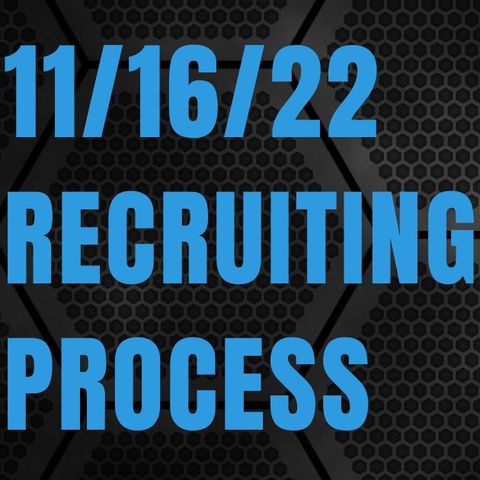Navigating the Early Recruiting Process

Download and listen anywhere
Download your favorite episodes and enjoy them, wherever you are! Sign up or log in now to access offline listening.
Description
We take a look at the recruiting process. It's been said that the college sports recruiting process is more like a marathon than a sprint. For many, it may seem...
show moreIf you’re doing it right, the recruiting process isn’t just a senior-year responsibility, and the amount of time you dedicate to your recruiting each week—or even each month—will fluctuate. Initially, you’ll need to spend extra time researching schools and writing individualized introductory emails to each coach. However, after your first round of emails and calls, you might hit a few slower periods, in which you send short follow-up emails, refine your highlight videos and work on maintaining your recruiting. The key is to steadily keep moving your recruiting forward and hitting the major milestones.
If there is one mantra above all others for recruiting, it’s “be proactive.” This is especially true for communicating with college coaches. Coaches are extremely busy; they have countless recruits to consider, plus teams of their own to coach during the regular season. It’s up to you to take control of your recruitment and stay in touch with the coaches at the schools you’re interested in. Professionalism and persistence in your communication will put you ahead of other recruits—even those who might be more skilled athletes. Learn about when to communicate, what to communicate, and ways to communicate with coaches.
A few things to consider:
Get on a coach’s radar!
For most sports, there is zero communication allowed between a D1 coach and a recruit before June 15 after sophomore year. The best way to let them know you’re interested? Fill out recruiting questionnaires and update them regularly.
Craft a compelling personal statement!
Personal statements are a great opportunity to show college coaches your character. Reflect on your athletic and academic achievements and identify what experiences or people have motivated and inspired you to pursue your sport at the next level.
Check your PSAT score!
PSAT scores are generally released beginning mid-December. Your scores are a good indicator of what you’ve learned so far, and pinpoint areas of improvement ahead of the ACT/SAT.
Gauge your talent level!
Whether it’s by uploading your most recent highlight/skills video or verified stats to your profile, comparing your athletic talents to recruits currently on your favorite schools’ team rosters, or getting evaluated by an NCSA Recruiting Coach, get a better understanding of your talent to kick off your college search.
Compare your favorites!
By now, you should have at least 30 schools on your NCSA Favorites. Start considering how they’re similar or different from one another, whether it’s by division level, size and location, or general rankings.
Facebook ~ https://www.facebook.com/BlackDiamondSoftballFitness
Twitter ~ https://twitter.com/BDSoftballFit
Instagram ~ https://www.instagram.com/black.diamond.softball.fitness/
Spotify | iHeart | iTunes | Google | Amazon ~ https://www.spreaker.com/show/foul-pole-to-foul-pole
Information
| Author | Tyler Black |
| Organization | Tyler Black |
| Website | - |
| Tags |
Copyright 2024 - Spreaker Inc. an iHeartMedia Company

Comments